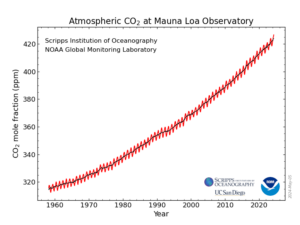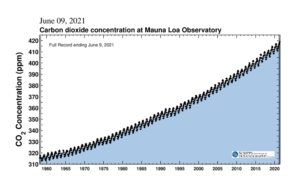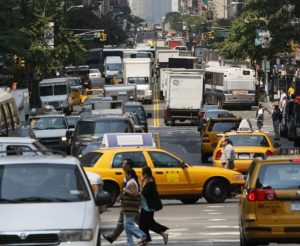 The US government would like to shut the Mauna Loa observatory in Hawaii down because it measures levels of atmospheric CO2, a measure of climate change. Well, unlike the US government, the rest of the world is very, very concerned about increasing CO2 levels in our atmosphere, and what increasing levels of greenhouse gases are doing to our climate and environment.
The US government would like to shut the Mauna Loa observatory in Hawaii down because it measures levels of atmospheric CO2, a measure of climate change. Well, unlike the US government, the rest of the world is very, very concerned about increasing CO2 levels in our atmosphere, and what increasing levels of greenhouse gases are doing to our climate and environment.
The United Nation's World Meteorological Organization (WMO) does not hesitate to loudly announce that CO2 levels are steadily rising, with record high levels in 2024, and what this means for our world going forward. Their words: it's "turbocharging our climate and leading to more extreme weather".
The important thing to know is that CO2 levels keep increasing, and each year new record high levels are set. Highest ever levels were in 2024. A big reason CO2 levels are increasing is due to the burning of fossil fuels (oil, gas, coal). The increase in wildfires is also contributing.
Excerpts from New Scientist: CO2 levels in Earth's atmosphere jumped by a record amount in 2024
Atmospheric carbon dioxide levels jumped by a record amount in 2024 to push concentrations to their highest point since measurements began, the UN’s World Meteorological Organization (WMO) has reported.
Between 2023 and 2024, the global average concentration of CO2 surged by 3.5 parts per million (ppm) to reach 423.9 ppm, the WMO has said. This is the largest increase since modern measurements started in 1957 and is well in excess of the 2022 to 2023 increase of 2.3 ppm. ...continue reading "Record High Levels of Carbon Dioxide In Our Atmosphere"



 This is of concern not just because the earth is warming (resulting in more extreme weather), but also what higher and higher carbon dioxide levels might do to our thinking processes. Think of a "stuffy room" where it is harder to think - this can already occur starting at about 600 ppm of CO2, and known to occur at 945 ppm and higher (in rooms with many people in them). While current CO2 levels are below that, we are faced with the possibility that if they keep rising we will get there eventually - and there will be no escape from the "stuffy room" feeling!
This is of concern not just because the earth is warming (resulting in more extreme weather), but also what higher and higher carbon dioxide levels might do to our thinking processes. Think of a "stuffy room" where it is harder to think - this can already occur starting at about 600 ppm of CO2, and known to occur at 945 ppm and higher (in rooms with many people in them). While current CO2 levels are below that, we are faced with the possibility that if they keep rising we will get there eventually - and there will be no escape from the "stuffy room" feeling! The possibility that rising carbon dioxide levels could eventually result in harmful effects on people's thinking (cognition) is scary. Currently levels are above 400 ppm and rising steadily each year. The Intergovernmental Panel on Climate Change predicts that outdoor CO2 levels could climb to 930 ppm by 2100, which means urban and indoor levels would be even higher.
The possibility that rising carbon dioxide levels could eventually result in harmful effects on people's thinking (cognition) is scary. Currently levels are above 400 ppm and rising steadily each year. The Intergovernmental Panel on Climate Change predicts that outdoor CO2 levels could climb to 930 ppm by 2100, which means urban and indoor levels would be even higher.